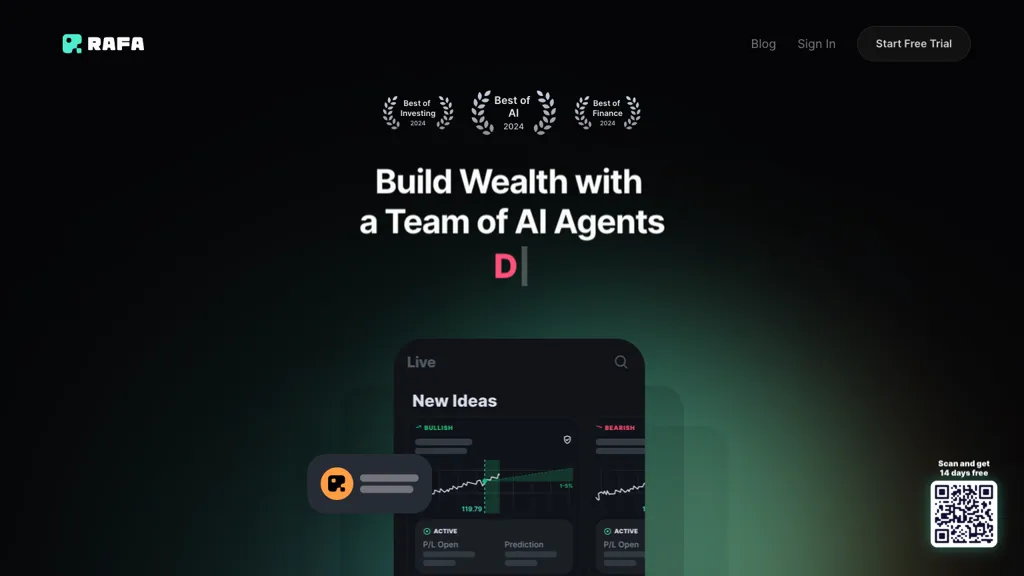Pricing and cost of AI-based stock predicting/analyzing trade platforms are important in order to avoid unforeseen expenses or hidden charges. Understanding what you are paying for and the price structure can be very different. This will help you make a more informed choice. Here are 10 tips to help you evaluate the price and value of these platforms.
1. Understanding Pricing Model
Subscription-based platforms: Find out the cost of an annual or monthly cost. Also, learn the features included with each level.
Pay-per use: Check whether you are charged based on the usage of the platform (e.g. number of transactions or requests for data).
Freemium model: Check whether there's a no-cost version with a limited number of features, and a premium version that includes the best features.
2. Compare Pricing Tiers
Review the features of each price level, e.g. Basic, Professional, Enterprise.
Scalability - Be sure that your pricing tiers are compatible with your requirements.
Upgrade flexibility: See if it is feasible to upgrade or downgrade your plan when you alter your requirements.
3. Evaluate Hidden Costs
Data fees: Find out whether the platform charges additional for access to premium data (e.g., real-time data, advanced analytics).
Brokerage charges: Determine whether the platform charges extra fees for trade execution or integration with brokers.
API usage - Determine if there are any additional costs that come with API access and/or high-frequency usage.
4. Demos, Free Trials and Test Drives
Trial period: Select platforms that let you test out the features of their platform before making an agreement.
Check the limitations of a trial trial. Does it offer all features?
Choice of no-commitment: Be sure that you are able to cancel your trial at any time if it doesn't fit your needs.
5. Check for Discounts and Promotions
Annual discounts: Find out whether the platform provides discounts for annual subscriptions as compared to monthly plans.
Referral programs: See whether the platform offers discounts or credits for referring other users.
Find out about pricing for institutions if you are part of a large organization.
6. How do you assess return on Investment (ROI).
Cost and value: Compare the cost of a platform with its capabilities. Can it save you time, or help make better decisions in trading?
Examine the platform's performance history or testimonials from users in order to estimate the potential return on investment.
Alternative costs: comparing the cost of the platform to the cost that could be incurred if the platform isn't used (e.g. missed opportunities, manual analysis of data time).
Review Cancellation/Refund Policies
Conditions for cancellation: Make sure that you are able to cancel your subscription with no penalties or hidden charges.
Refund policy: Make sure to check whether the website offers refunds on unused portions of your subscription.
Auto-renewal : Check if your subscription is automatically renewed by the platform and learn how to opt out.
8. Review Transparency of Pricing
Clear pricing page: Make sure that the platform offers an easy and precise pricing page that does not include any extra charges.
Customer Support: Contact customer service for clarification of any unclear pricing information or additional charges.
Contract Terms: Review the conditions of service for any long-term agreements or penalties.
9. Compare yourself to your competitors
Comparison of features: Ensure you're getting the best value and the best platform when comparing it against its rivals.
Feedback from users: See what other users think about the platform and determine whether it's worth the price.
Market positioning: Determine whether it is priced as an expensive, mid-tier or budget option, and if it aligns with your expectations.
10. Think about the long-term costs
Price hikes: Check out the history of the platform in the past and note how often it increases prices.
Feature Additions: Evaluate if there are new features in your current package or whether you should upgrade.
Scalability costs - Make sure that the cost of your platform is reasonable even as your trading volume or data needs increase.
Bonus Tips:
Try multiple platforms. Test the capabilities and benefits of multiple platforms by testing their capabilities during free trials.
Offer prices to negotiate: If have a lot of customers or belong to an organization, ask for special pricing and discounts.
There are a variety of platforms that offer educational tools and resources for free.
Utilize these suggestions and you will be able assess the costs, pricing and features of AI platform for trading stocks. A high-quality trading platform can strike the right equilibrium between affordability and features which will help you achieve the best results. Read the most popular on front page about stock ai for site recommendations including ai for trading, best ai stock, best ai trading software, ai investing app, chatgpt copyright, using ai to trade stocks, stock ai, ai investment app, stock ai, ai investment app and more.

Top 10 Tips To Evaluate The Effectiveness Of Ai Stock Predicting/Analyzing Trading Platforms
To make sure that AI-driven trading platforms and prediction systems are able to handle the growing amount of data, user requests, and market complexity, it is vital to determine their scalability. Here are top 10 tips on how to evaluate the scalability.
1. Evaluate Data Handling Capacity
Check to see if your platform is able to analyze or process large amounts of data.
What is the reason? Scalable platforms should be able handle growing data volumes with no performance degradation.
2. Test the capabilities of a Real-Time Processor
See if your platform is able to handle live streams of data in real-time, like live stock quotes or breaking news.
The reason: The immediate analysis of trading decisions is vital because delays could lead you to miss opportunities.
3. Check Cloud Infrastructure and Elasticity
Tip: Find out whether the platform is able to dynamically scale resources, and if it uses cloud infrastructure (e.g. AWS Cloud, Google Cloud, Azure).
Why: Cloud platforms offer elasticity, allowing the system to scale up or down depending on the demand.
4. Algorithm Efficiency
Tip 1: Evaluate the computational performance of the AI models that are being utilized (e.g. reinforcement learning deep learning, reinforcement learning, etc.).
The reason: Complex algorithms can consume a lot of resources. Optimizing them is essential to scale them.
5. Investigate Parallel Processing and distributed computing
Verify if your platform supports the concept of distributed computing or parallel processing (e.g. Apache Spark, Hadoop).
The reason is that these technologies help speed data processing across several nodes.
Examine API Integration, and Interoperability
Tips: Make sure to check the integration of the platform with external APIs.
Why? The platform can adapt to the changing requirements of data sources and trading environments because of seamless integration.
7. Analyze User Load Handling
To check the effectiveness of your platform, simulate high traffic.
Why should scalable platforms provide the same performance regardless of how many users there are.
8. Assess the effectiveness of Model Retraining and Adaptability
Tip Assess how frequently the AI models are trained on new data.
The reason is that markets are always changing, and models need to be able to change quickly to remain accurate.
9. Check for Fault Tolerance and Redundancy
Tips: Make sure the platform has failover mechanism and redundancy in case of hardware or software issues.
The reason: Since downtime is costly in the trading industry and trading, fault tolerance is essential to the ability to scale.
10. Monitor Cost Efficiency
Analyze costs associated with increasing the capacity of the platform. This includes cloud resources and data storage as in addition to computational power.
What is the reason: The expense of scaling should not be too high. Therefore, it is essential to balance performance and cost.
Bonus Tip Future-Proofing
Assuring that the platform will be able to accommodate emerging technologies (e.g. advanced NLP quantum computing, quantum computing) and regulatory changes.
Concentrating on these factors will enable you to evaluate the scalability AI software for stock prediction and trading, and ensure they are robust effective, efficient and capable of sustaining future expansion. Have a look at the best additional reading for free ai tool for stock market india for website info including ai options trading, ai stock trader, ai stock predictions, stocks ai, ai stock analysis, ai copyright signals, ai stock investing, stock trading ai, best ai trading platform, ai tools for trading and more.
